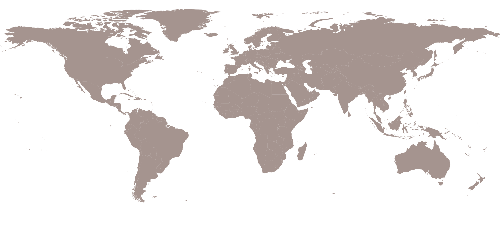Maritime Innovation Center Advances Construction at Seattle’s Fishermen’s Terminal
Holcim Foundation Award-winning project sets a new course in adaptive reuse and sustainable maritime innovation
Last updated: April 28, 2025 Seattle, WA, USA
At the heart of the project is lifting and temporarily moving the 109-year-old Ship Supply Building so the century-old pilings that form its foundation at Fishermen’s Terminal can be replaced. Key construction activities completed to date include selective demolition, abatement, and salvage of materials for reuse, as well as the installation of piles, grade beams, and foundations. In a complex logistical feat, the building’s existing superstructure was temporarily relocated to allow for foundational work, and has now been returned and anchored to its new base. Utility work is underway, and supplemental structural steel is being installed.
Moving History: Maritime Innovation Center at Fishermen’s Terminal | Time-Lapse
Watch as the historic Ship Supply Building at Seattle’s Fishermen’s Terminal is carefully relocated to allow critical repairs and renovation of its original foundations.
Navigating Complex Challenges with Creative Solutions
The path to progress has not been without obstacles. Early in the construction phase, unforeseen underground utility conditions required on-the-fly coordination between the design team, contractor, and the City of Seattle. These challenges prompted post-permit adjustments to utility plans and underscored the importance of field-based collaboration.
Meeting Living Building Challenge (LBC) materials requirements in a competitive bidding environment also posed difficulties, particularly in sourcing products free of harmful chemicals. The architectural team responded with careful submittal management, ensuring all substitutions aligned with the project's high-performance goals.
The procurement of solar photovoltaic systems presented another layer of complexity, involving coordination with third-party design-installation firms and adapting layouts to meet Port of Seattle rooftop safety clearances. These constraints demanded high-efficiency panels and adaptive design strategies—an ongoing process as the team balances innovation with real-world constraints.
In parallel, regulatory changes in Washington State’s water treatment policies forced the team to rethink its rainwater reuse strategy. Originally designed for potable use, the system was adapted to serve greywater needs only, including irrigation and toilet flushing, and one cistern was removed to meet the revised scope.
Innovation and Adaptability in Action
Flexibility has been a cornerstone of the project’s success. Integrating salvaged materials into the evolving design has required creative problem-solving, especially as site conditions and timber quality varied from initial expectations. Working with local reclaimed lumber suppliers, the team maintained the project’s sustainability intent while adjusting for logistical realities.
The building also serves as a testbed for emerging technologies, including low-GWP concrete mixes and blackwater treatment systems. Several of these solutions, piloted here, are expected to influence future sustainable projects in Seattle and beyond.
Measurable Impact: Environmental, Social, and Economic
Already, the project is delivering positive outcomes. Replacing damaged stormwater pipes has improved runoff into Salmon Bay, and low-carbon concrete is now informing city-wide building practices. A green lease agreement between the Port of Seattle and anchor tenant Maritime Blue offers a replicable model for sustainable operations.
Socially, the project is driving equity. Construction is governed by the Port’s Project Labor Agreement and Community Workforce Agreement, encouraging apprenticeship programs and supporting minority- and women-owned businesses.
Economically, the future Maritime Innovation Center will anchor the region’s blue economy. Through its partnership with Maritime Blue, the facility will support innovation cohorts, linking start-ups with maritime industry leaders to stimulate job growth and sustainable economic development.
Lessons Learned for the Industry
Working on an active waterfront has offered valuable lessons in stakeholder coordination and scheduling. Utility outages and deliveries must be timed carefully to avoid disrupting port operations, particularly for commercial fishers. This has reinforced the value of proactive communication and flexible logistics planning.
The team also recommends incorporating a “project validation phase” prior to construction for high-performance buildings—especially those requiring long-lead sustainability components. This would allow more certainty during procurement and reduce design revisions under pressure.
Finally, the permitting process in environmentally critical shoreline areas has revealed the need for early and ongoing architectural involvement. Future projects could benefit from building in contingency support for design teams to manage on-site complexities in real time.
A Global Model for Regenerative Maritime Development
The Holcim Foundation Awards prize has elevated the profile of the Maritime Innovation Center locally and internationally. The Port of Seattle’s vision to become the greenest port in North America is reinforced by the recognition, and the project is now being referenced at global port conferences as a model for adaptive reuse, sustainable innovation, and blue-tech development.
As construction continues into 2025, the Maritime Innovation Center is well on its way to becoming a global benchmark in sustainable, inclusive, and future-forward maritime infrastructure. The building is already garnering attention for future conferences on ports around the world - to show how similar facilities could occur elsewhere, and create a global impact in the context of sustainability of maritime infrastructure.
Project Timeline
- October-November 2023: Contactor Bidding and Selection
- March 2024: Contractor Mobilization - Demolition, Salvage and Site Work
- May 2024: Start of Construction
- June 2024: Building Move
- July-December 2024: Foundations and Utility Work
- January 2025: Building Move Back

















